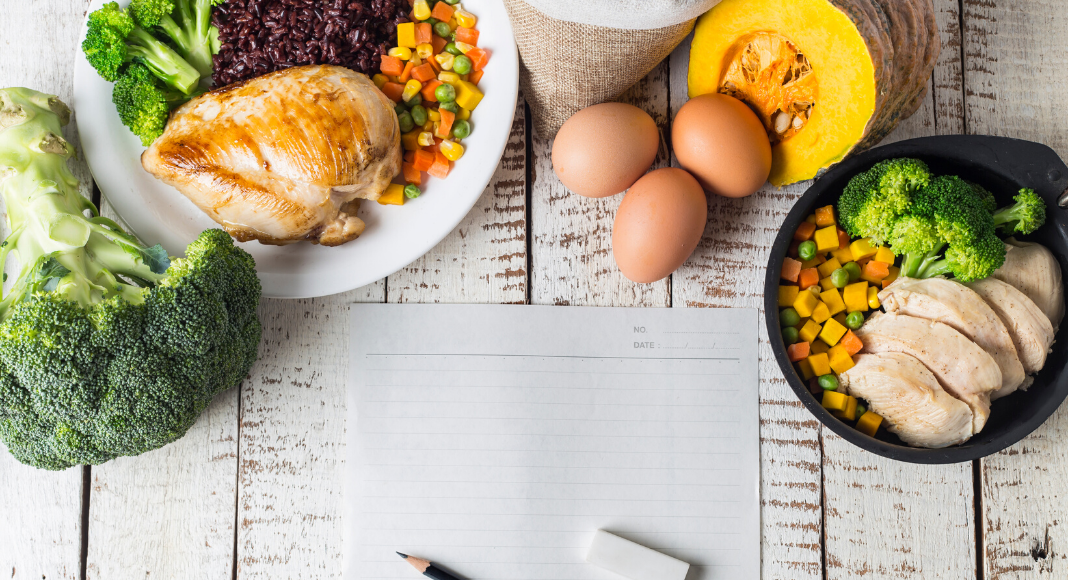Which of these 6 popular diets can help you look and feel your best? Read on for details about each, plus my tips for healthy eating!
“You’re off to Great Places! Today is your day! Your mountain is waiting, So… get on your way!” – Dr. Seuss
Colorado Springs is re-opening and excitement is in the air. Maybe you are making plans and going out or maybe you are staying home and avoiding crowds for a little longer. Either way, you’re off to great places even if your adventures are close to home. (Sometimes the best ones happen in our homes.)
Activities and adventures are more fun when we are feeling our best, so I want to focus on filling up our bodies on nutritious foods.
There are tons of people telling us how and what to eat with so many diets to choose from and so much mixed information. It can easily feel overwhelming. To make this a little more manageable and approachable, I want to share this list I’ve compiled of popular diets — what they are and the pros and cons of each, so you can decide what’s best for you.
Here we go!
The Paleo Diet
What is it? You may eat fish, eggs, seeds, nuts, fruits, and veggies, along with healthy fats and oils. You’ll want to avoid processed foods, grains, dairy, and sugar.
Pros: This diet is rich in nutrient dense foods. This means you will most likely find yourself eating more fruits and vegetables and less processed foods. While focusing on whole foods, you will mostly likely find yourself cooking more and eating out less. These changes will help you live longer and healthier. It can also help you lose weight and improve your cardiovascular health.
Cons: You are not supposed to eat dairy, sugar and grains. Eliminating these food groups may not be the best choice for your body.
The Ketogenic Diet
What is it? Keto diet means eating a high fat and low carb diet. It is designed for weight loss which happens when you eliminate most carbs from meals. When you do this your body is placed in a state of ketosis, which makes your body burn fat to use as energy.
Pros: In a typical diet, your body burns carbohydrates for energy, but when your body is put into ketosis, your body burns fat for energy instead which often results in quick weight loss. Also, eating foods that are high in fat can help eliminate cravings and help you feel more satiated.
Cons: Eating fewer carbs might not be the most nutritious for your body. Fewer carbs can make you feel low on energy and make it hard to focus. This happens when your body is not getting enough glucose (sugar) that comes from eating carbs. In addition, many of the foods that make up this diet are high in saturated fats and meats which can cause an increase in cholesterol. High cholesterol can lead to a risk of heart disease.
Veganism
What is it? It is a diet completely devoid of animal products which includes eggs, honey, and dairy products.
Pros: The diet is plant-based which means you will probably find yourself loading up on healthy whole grains, legumes, fruits, and vegetables. This decreases the risk of many chronic diseases. A vegan diet is typically high in fiber, vitamin C, magnesium, iron, and folate. It also has no animal impact and it is healthier for the environment.
Cons: A vegan diet can have some nutritional deficiencies. For example, calcium which is needed for bone formation and muscle contraction. Also, vitamin B-12 which is only found in animal products and is needed for healthy nerve function and blood cell production. Lack of quality protein can be another issue for some people. Although there are plant-based sources of protein, they can be missing amino acids which are crucial for maintaining healthy organs and muscles.
The Macro Diet
What is it? The Macro Diet means eating a measured and balanced amount of the macro nutrients: protein, carbohydrates, and fats.
Pros: Counting macros and calories can help hold you accountable to eating the right amount of foods. It provides awareness to any nutritional imbalances you may have and teaches what serving sizes actually look like.
Cons: It doesn’t take into consideration the quality of food — the focus is on the calories of the macro nutrients. It can cause or exacerbate disordered eating because of the close attention needed to weigh, measure, and record the macros.
The Mediterranean Diet
What is it? It’s a diet filled with whole grains, vegetables, fruit, fish, olive oil, nuts, and legumes. Quality dairy, red meat, and red wine can be enjoyed in moderation. Processed foods, refined oils, and added or artificial sugars are not allowed.
Pros: The diet is rich in healthy fats which lowers cholesterol and reduces the risk of heart disease. It also promotes cancer fighting antioxidants and helps keep blood pressure levels low.
Cons: It is based on proper and balanced nutrition, but lacks specific parameters which can cause over- and under-eating. Also, the recommendation of daily wine (even in moderation) may not be best choice for everyone.
Intermittent Fasting
What is it? There are many different ways to do intermittent fasting. You can completely eliminate food on certain days or restrict foods to only certain times of the day.
Pros: This diet is fairly easy to follow because you do not have to count calories and there are no food restrictions. It is known to promote weight loss.
Cons: While in a fasting state, you may feel very hungry, tired, and sluggish. This diet does not encourage nutritious eating and it is advised not to do this diet long term.
Now:
I know that was a lot of information, so to help simplify things, I want to share a few tips most health experts seem to agree on when it comes to healthy eating.
Simply put:
- Choose foods that have a low glycemic load which means they are low in sugar, flour, and refined carbs of any kind.
- Fill your plate with vegetables and fruits. (Local and fresh foods when possible.) Fruits and vegetables are high in phytonutrients which protect against most diseases.
- Shop for foods that are chemical free — this includes additives, preservatives, dyes, MSG, artificial sweeteners, pesticides, antibiotics, and hormones.
- Quality over quantity! The higher the quality, the better for you. Choose quality fats like olive oil, nuts, seeds, and avocados.
- Protein is pivotal, especially in the elderly. Protein aids in appetite control and muscle synthesis. When it comes to animal protein, try to buy products that are sustainably raised or grass-fed.
Dr. Seuss also wrote, “Sometimes the questions are complicated and the answers are simple.”
When it comes to nutrition, our goals, our lives, and our questions are complicated, but the answer is simple: Weed out the bad stuff and fill up on the good stuff.
So, whether you are going out or staying home, fill your heart and body with all the good stuff: Lots of love, quality rest, and nutritious foods.
Your mountain is waiting. So … Get on your way! And stay healthy!














